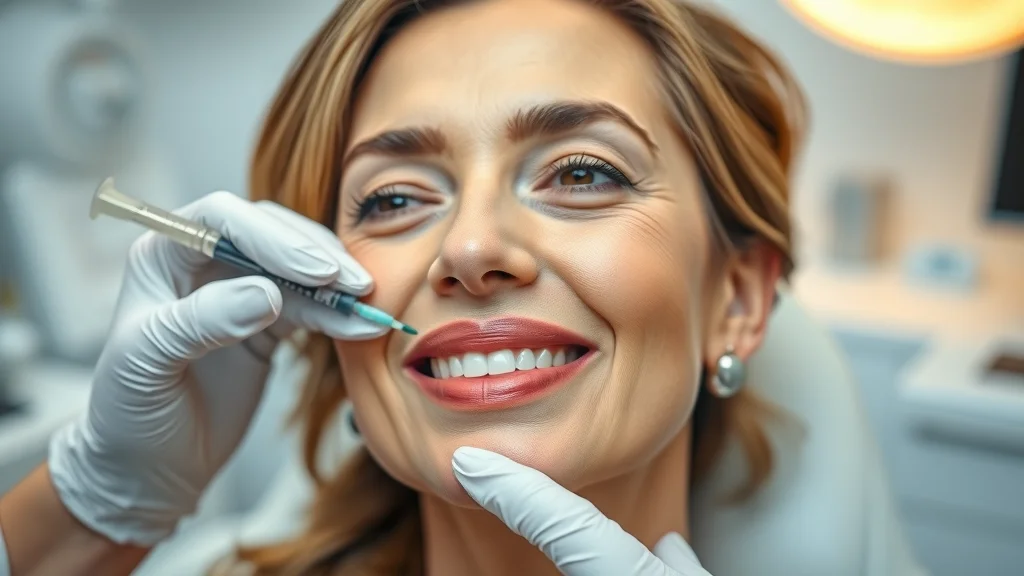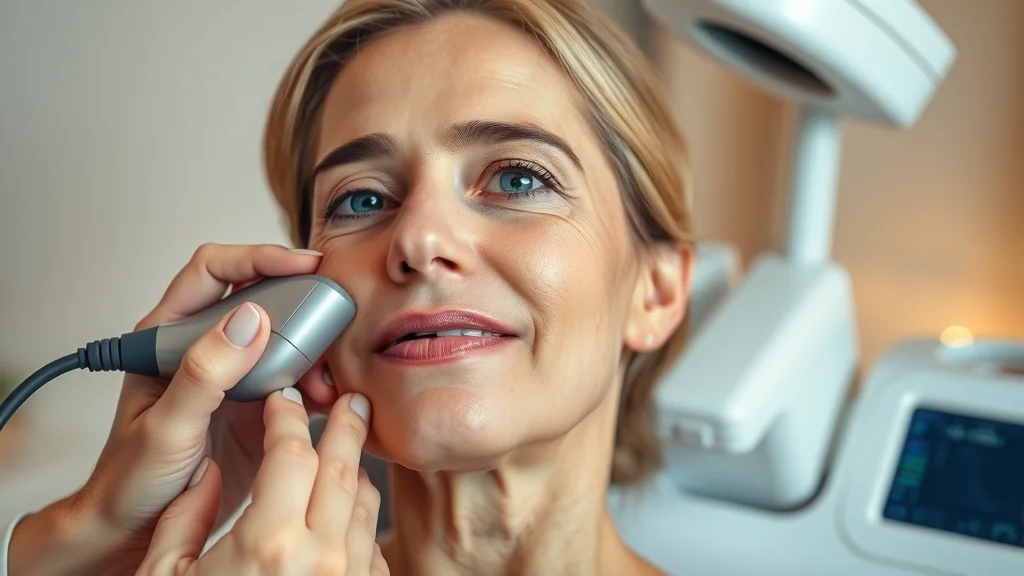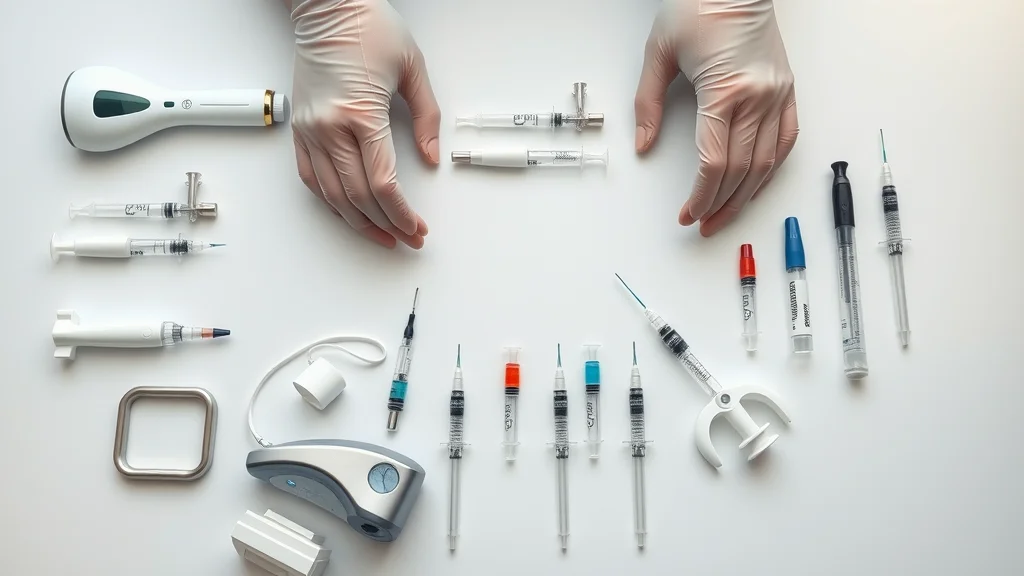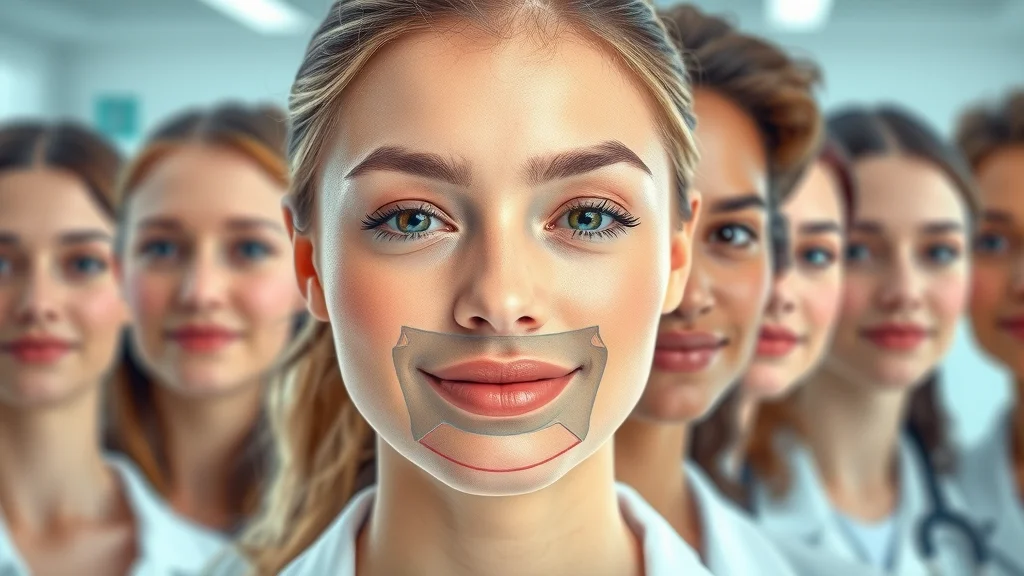Did you know that over 70% of people seeking facial rejuvenation now opt for non-invasive facelift options instead of traditional surgery? With breakthroughs in aesthetic technology, it's possible to turn back the clock and look years younger—without major surgery, lengthy recovery, or dramatic interventions. This comprehensive guide reveals how modern skin tightening, injectables, lasers, and advanced lift alternatives are rewriting the anti-aging story, letting you achieve lasting results quickly, safely, and confidently.
Rewriting the Anti-Aging Story: Surprising Realities Behind Non-Invasive Facelift Options
More adults than ever are choosing non-invasive facelift options over surgical facelifts, drawn by the promise of tighter skin, improved facial contours, and a youthful appearance—without going under the knife. These innovative facial rejuvenation treatments not only address wrinkles, fine lines, and sagging skin, but also offer minimal downtime, lower risks, and more natural results. This shift is driven by advancements in skin tightening technology, rising demand for quick yet effective anti-aging solutions, and public desire to avoid the risks and recovery period associated with plastic surgery.
As the beauty industry rapidly evolves, today’s non-invasive alternatives can deliver dramatic improvements once possible only with a surgical facelift. Understanding what sets these new lift procedures apart is crucial for anyone considering facial rejuvenation. From injectables and laser treatments to ultrasound and thread lifts, we’ll break down the pros, cons, costs, and candidacy for each option—helping you make an informed choice for your unique skin concerns and long-term goals.
A Revolution in Facial Rejuvenation: Why Non-Invasive Facelift Options Matter
Non-invasive facelift options have transformed the anti-aging landscape, making facial rejuvenation accessible to a broader range of people. Instead of enduring the risks and significant recovery period common with traditional surgical facelifts, patients now enjoy instant or near-instant results—often within the same day. These modern alternatives harness the body’s natural collagen production and leverage technologies like laser skin resurfacing, ultrasound, and injectables to address the most common signs of aging.
What makes these approaches so compelling is their ability to mimic the effects of a facelift, such as reducing sagging skin and smoothing fine lines, without the need for incisions or anesthesia. This means less risk of complications, reduced costs, and minimal disruption to your daily routine. For many, these options are not simply a temporary fix, but an effective, ongoing solution for aging gracefully and maintaining confidence at any age.

What You’ll Learn About Non-Invasive Facelift Options
Key differences between non-invasive facelift options and traditional surgical facelift techniques
List of leading non-invasive skin tightening treatments and facelift alternatives
Pros, cons, and costs of popular facelift alternatives
Latest technologies in facial rejuvenation that require no surgery
Surgical Facelift vs. Non-Invasive Facelift Options
Deciding between a surgical facelift and non-invasive facelift options is a critical choice that depends on age, skin condition, budget, and recovery preferences. Surgical facelifts—once the gold standard for reversing signs of aging—deliver significant and longer-lasting results, but require anesthesia, weeks of downtime, and higher costs. In contrast, non-invasive and minimally invasive lift alternatives target fine lines, sagging skin, and mild-to-moderate facial aging through advanced technology, offering fewer risks and virtually no interruption to your routine.
The real surprise is that, for many patients, the results from today’s top non-invasive facelift options can nearly match those of surgical facelifts, particularly when started early and maintained correctly. Below, we provide an at-a-glance comparison to highlight key differences in features, risks, longevity, and costs, helping you confidently choose the right pathway to younger-looking skin.
Comparing Effects: Surgical Facelift Versus Minimally Invasive & Non-Invasive Approaches
The effects of a surgical facelift are more dramatic and longer-lasting, making it ideal for advanced facial aging, but the trade-offs include potential complications, a longer recovery period, and scarring. By contrast, non-invasive and minimally invasive alternatives like injectables, lasers, and energy devices focus on collagen stimulation, skin tightening, and restoring lost volume with little to no downtime. These treatments are optimized for those seeking gradual, subtle improvements or wishing to delay surgery. Maintenance and individual response play large roles, but for many, non-surgical facial rejuvenation delivers remarkable, natural-looking results.
Below is a detailed comparison table to help you weigh your options:
Treatment Type |
Key Features |
Average Cost |
Recovery Time |
Risks |
Longevity |
|---|---|---|---|---|---|
Surgical Facelift |
Deep tissue lifting, significant tightening and contouring |
$7,000–$15,000+ |
2–4 weeks |
Moderate to high (scarring, infection, anesthesia) |
7–12 years |
Minimally Invasive (Thread Lifts) |
Polydioxanone threads lift sagging skin with micro incisions |
$2,000–$5,000 |
2–7 days |
Mild to moderate (bruising, swelling, thread migration) |
1–2 years |
Non-Invasive (Injectables, Lasers, Ultrasound) |
Stimulate collagen, smoothing, volume restoration, tighten skin |
$400–$3,500 per session |
None to 2 days |
Low (bruising, redness, temporary swelling) |
6–24 months (varies by treatment) |

Why Choose Facelift Alternatives? Addressing Risks and Recovery with Non-Invasive Options
Traditional surgical facelifts deliver transformative results, but not everyone is willing—or medically suited—for an invasive procedure. The risks and recovery period often deter people with busy lifestyles or health conditions. In contrast, today’s non-invasive facelift options minimize complications, require far less downtime, and can be repeated or adjusted as aging progresses. This flexibility, combined with lower initial costs and fewer side effects, explains the dramatic rise in facelift alternatives for facial rejuvenation.
As a board-certified plastic surgeon explains:
“Modern non-invasive facelift options can rival surgical outcomes for many patients, without the downtime.” – Board-Certified Plastic Surgeon
For individuals experiencing the early or moderate signs of aging—like lost volume, fine lines, and mild sagging skin—non-invasive skin tightening and facial lift alternatives often provide the balance between instant improvement and long-term maintenance. These treatments can also serve as preventative care, maintaining a youthful appearance longer and delaying the potential need for surgical facelifts.
Breaking Down the Most Popular Non-Invasive Facelift Options
The world of facial rejuvenation is rich with choices. Here’s what you need to know about each major category of non-invasive facelift options—from injectables and lasers to energy devices and thread lifts—to help select the right approach for your skin.
Injectables for Facial Rejuvenation: Neuromodulators & Dermal Fillers
How injectables offer facelift alternatives for sagging skin and wrinkles
Lasting results, side effects, and maintenance requirements
Injectables, including neuromodulators (like Botox and Dysport) and dermal fillers (such as Juvederm or Restylane), have revolutionized facial rejuvenation. Neuromodulators relax facial muscles, smoothing dynamic wrinkles caused by movement, while fillers restore lost volume and structure in areas affected by gravity and aging. These treatments are well-suited for reducing fine lines, sagging skin, and loss of facial fullness—delivering immediate, noticeable results without surgery.
The procedure is quick, often completed in under an hour, with little to no downtime beyond mild swelling or bruising that resolves within a few days. Lasting results vary: neuromodulators typically last 3–6 months, while fillers can provide improvement for 6–24 months, depending on the product and treatment site. Risks are low when performed by a skilled provider, but maintenance sessions are required to maintain a continuous youthful appearance. For many, injectables serve as both a preventative and corrective solution, delaying or even eliminating the need for a surgical facelift.

Laser Treatments for Skin Tightening and Rejuvenation
Overview of laser resurfacing, laser skin resurfacing, and fractional laser treatment
Best candidates, skin types, and expected outcomes
Laser skin treatments—including laser resurfacing and fractional laser therapies—have quickly become fixtures in the arsenal of facelift alternatives. These technologies use precisely controlled light energy to target sun damage, uneven skin texture, wrinkles, and mild sagging skin. By creating micro-injuries in the deeper layers of the skin, lasers stimulate collagen production and prompt natural healing—a process that gradually tightens and rejuvenates the skin.
Laser procedures can be customized for various skin types and concerns. Non-ablative lasers require minimal downtime and target deeper tissues, while ablative lasers offer more dramatic effects with several days of redness and peeling. The best candidates are those with early to moderate signs of photoaging, sun damage, and fine lines. Depending on the device and intensity, lasting results typically appear after a series of sessions, with ongoing improvements over several months as new collagen forms.
Ultrasound and Radiofrequency Devices: Non-Invasive Skin Tightening Explained
Key brands (Ultherapy, Thermage), how they work, downtime, and efficacy against sagging skin
Ultrasound (e.g., Ultherapy) and radiofrequency (e.g., Thermage) devices have changed the landscape of non-invasive skin tightening. Using sound waves or radiofrequency energy, these devices safely heat deeper layers of skin to stimulate collagen production without damaging the surface. The result is a gradual lifting and smoothing of facial contours, improvement in skin texture, and reduced sagging skin, all without incisions or needles.
Treatments are comfortable, with mild redness or swelling resolving quickly—making them popular choices for busy adults. The most notable advantage is their ability to address moderate laxity in the jawline, neck, and brow. Some patients see improvement in as little as one session, but the effects continue to build for 3–6 months post-treatment. Typical results last 12–24 months, especially when accompanied by a diligent skincare routine and annual maintenance.

Thread Lifts: A Minimally Invasive Facelift Alternative
What are thread lifts, pros and cons, typical results, price points
Thread lifts offer a unique, minimally invasive approach to lifting sagging skin with no large incisions or extended downtime. Special dissolvable threads are placed under the skin, gently suspending tissues to restore lifted contours. This instant improvement is coupled with a longer-term, gradual boost in collagen production as the threads dissolve over time.
Patients appreciate the minimal disruption to daily life—most return to work within days—and the ability to refresh their facial appearance without surgery. However, results last about 1–2 years versus the 7–12 years possible with a surgical facelift. Thread lifts aren’t a replacement for severe laxity or dramatic aging but are excellent for those wanting a subtle, risk-conscious lift at a lower price (generally $2,000–$5,000 per procedure).
How to Choose: Factors Influencing the Best Non-Invasive Facelift Options for You
Assessing your facial concerns (sagging skin, wrinkles, sun damage, volume loss)
Consultation with a facial plastic surgeon or dermatologist
Duration of lasting results and maintenance needs
Understanding candidacy for minimally invasive or true non-invasive therapies
Finding the right non-invasive facelift option is a personalized journey. Assess your unique skin concerns: Is your primary issue sagging skin, deep wrinkles, sun damage, or a combination of factors? Consultation with a skilled facial plastic surgeon or dermatologist is crucial. They’ll analyze your facial symmetry, skin type, volume loss, and signs of aging to suggest a tailored approach—often combining treatments for optimal results.
Consider how long you want your results to last and your willingness for maintenance. Some treatments (like fillers or neuromodulators) require regular touch-ups, while others (thread lifts or certain device-based skin tightening procedures) offer longer intervals between sessions. Equally important is to understand whether you’re a good candidate for minimally or fully non-invasive therapies—factors like skin thickness, health history, and personal preferences play a big role. With informed guidance, most people can achieve remarkable, natural rejuvenation without surgery.

What is the Best Nonsurgical Facelift? [People Also Ask]
Answer: Evaluating Top Non-Invasive Facelift Options for Maximum Results
The "best" nonsurgical facelift depends on your individual goals, skin type, and severity of aging. For volume loss and fine lines, dermal fillers and neuromodulators (like Botox) often offer the fastest rejuvenation. When skin texture and sun damage are top concerns, laser treatments and fractional skin resurfacing shine. For jawline and cheek definition, Ultherapy and radiofrequency devices provide non-invasive skin tightening with minimal downtime.
Many patients see the most dramatic improvements with a combination of treatments, tailored by their facial plastic professional. The ideal approach balances lasting results, budget, and lifestyle needs for a refreshed, natural result. Consulting with an expert ensures you choose the best non-surgical facelift for your face.
What is the Newest Non-Surgical Facelift Procedure? [People Also Ask]
Answer: Innovations and Technology in Non-Invasive Facelift Options
The latest trends in non-surgical facelift procedures focus on combination therapies—blending energy-based devices, injectables, and collagen-stimulating threads for a synergistic lift. Newer technologies like micro-focused ultrasound (Ultherapy), radiofrequency microneedling (Morpheus8, Profound), and laser skin resurfacing provide deeper, longer-lasting results than ever, with improved comfort and safety for all skin types. These advancements stimulate natural collagen and elastin, combatting laxity and volume loss before they become profound enough to demand surgery.
As minimally invasive techniques evolve, downtime shrinks and risks decrease. Emerging protocols also include biologic injectables—like PRP (platelet-rich plasma) and exosome therapy—to accelerate healing and boost natural rejuvenation for youthful, glowing skin.
What is the Best Non-Invasive Skin Tightening Treatment for the Face? [People Also Ask]
Answer: Comparing Skin Tightening Technologies Among Facelift Alternatives
For skin tightening, Ultrasound (Ultherapy) and Radiofrequency (Thermage, Profound) devices consistently rank as the best non-invasive options for their ability to treat mild-to-moderate sagging skin. By delivering customized energy below the skin’s surface, they trigger robust collagen production over months, firming up the jawline, cheeks, and neck with minimal risk or downtime.
Laser treatments (such as fractional CO2 or erbium lasers) and advanced microneedling devices are also effective, particularly when texture, sun damage, and pigment irregularities accompany skin laxity. The most effective protocols often combine a device-based procedure with targeted injectables for comprehensive facial rejuvenation and longer-lasting results.
How Much Does a Non-Surgical Face Lift Cost? [People Also Ask]
Answer: Pricing Ranges for Non-Invasive Facelift Options—From Laser Treatments to Injectables
The cost of non-surgical facelift options is highly variable, depending on region, provider expertise, severity of aging, and number of sessions needed. On average: injectables range from $400–$1,500 per area, laser treatments from $800–$3,500 per session, and device-based skin tightening (Ultherapy, Thermage) from $1,200–$4,000 per treatment. Minimally invasive thread lifts cost between $2,000–$5,000. Keep in mind, maintenance is often required for ongoing results. While less expensive than a surgical facelift (which ranges from $7,000–$15,000+), repeated sessions of non-invasive treatments should be factored into your budget for long-term plans.

Key Takeaways: Making an Informed Choice on Facelift Alternatives
Non-invasive facelift options offer impressive facial rejuvenation, fewer risks, less downtime, and more affordable pricing than surgical facelifts.
Understand your core concerns—whether sagging skin, fine lines, or sun damage—before choosing a treatment.
Consult with a board-certified facial plastic surgeon or dermatologist for a personalized plan and lasting results.
Surgical facelifts are best for dramatic aging; non-invasive options shine for early-to-moderate sagging, volume loss, and texture improvement.
Regular maintenance, healthy lifestyle, and protection against sun damage enhance and extend your youthful appearance.
When unsure, seek professional consultation to weigh the benefits of surgical facelifts versus non-invasive rejuvenation procedures.
FAQs: Non-Invasive Facelift Options in Practice
Are non-invasive facelift options safe for all skin types?
Most non-invasive treatments are safe for a broad range of skin types, thanks to advances in technology. However, certain lasers and energy devices must be selected carefully for deeper skin tones to avoid unwanted pigmentation. Always consult with a provider experienced in treating your specific skin type for optimal safety and results.How many sessions are typically needed for optimal skin tightening?
The answer varies depending on the treatment and the severity of skin laxity. Many device-based procedures like Ultherapy or laser skin resurfacing show results in one to three sessions, while injectables and fillers usually require ongoing maintenance every 6–24 months. Your provider will tailor a regimen for your unique needs and goals.What lifestyle changes can support longer-lasting results from facelift alternatives?
Adopting sun protection, maintaining a balanced diet, staying hydrated, and following a personalized skincare routine all help preserve the benefits of your non-invasive facelift options. Avoiding smoking and limiting alcohol also support collagen production and overall skin health.How do facelift alternatives impact sun damage and skin health?
Non-invasive options like fractional lasers and certain chemical peels can significantly improve sun damage, boost skin texture, and enhance skin radiance. While these treatments help correct existing damage, ongoing sun protection is essential to maintain results and prevent further photoaging.What are the realistic expectations for facial rejuvenation with non-invasive therapies?
While most treatments provide visible, natural improvements, results are typically more subtle and gradual than with a surgical facelift. Optimal outcomes require regular maintenance and realistic expectations regarding the degree of correction, especially for moderate to advanced signs of aging.
Summary: Advancing Toward Youthful Skin with Non-Invasive Facelift Options
Look younger, instantly and confidently, by exploring non-invasive facelift options today
Non-invasive facelift options offer safe, accessible, and effective ways to refresh your appearance—without dramatic surgery. Schedule a consultation today to discover the right solution for your unique needs and step confidently into a more youthful tomorrow.
 Add Row
Add Row  Add
Add 




Write A Comment